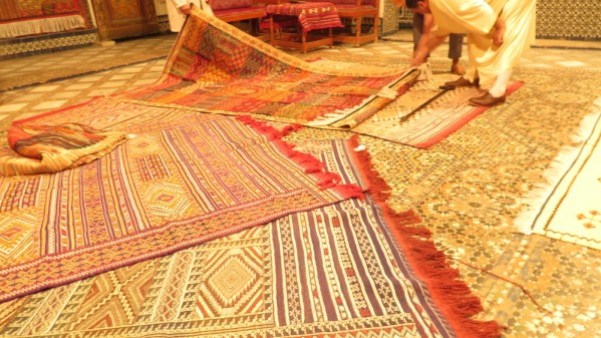Domus Aurea
The Domus Aurea – The Golden House – now sits beneath ground level just above the Coliseum on the Via Celio Vibenna side. It was buried after the death of the Emperor who had it built, the infamous and wildly unpopular Nero. In its glory it was a vast entertainment palace surrounded by extensive and gorgeously landscaped grounds. When the underground are was discovered in the early 1500’s by a farmer whose shovel broke through the ceiling of one of the immense galleries, it was explored by Raphael and other artists, who were infatuated by the art they found, and so the Domus came to influene European art for the next 500 years. Thanks to the high tech 3d goggles included with the entrance fee, you get a good sense of its beauty and scale.

The complex extended to the Palatine, Esquiline, Oppian and Caelian hills, although the exact extent of the development is not known. It included a man made lake in what was before a marshy valley, located where the Coliseum is now; the latter was built to replace the lake. There were groves, vineyards, and pastures and a huge bronze of Nero, called Colossus Neronis, last mentioned in the 4th century. It was placed at the end of Via Appia, about a kilometer from the current visitor’s entrance, but later moved to where the Coliseum is now located, and to which it gave its name.
There were some 300 variously designed rooms, none of them sleeping quarters, and neither were there kitchens nor latrines. Nero’s residence remained on the Quirinali Hill. The walls were covered with polished white marble. Openings lit the pools, fountains and the frescoes that fascinated Raphael and his colleagues 15 centuries later. An interesting tidbit- Nero’s chief artist for the complex was called Fabulus ( presumably from Latin fabulosus “celebrated in fable;” also “rich in myths,” from fabula , story or tale) or Famulus. This suggests that our use of ‘fabulous’ was changed from having to do with fables to being wonderful, as a result of the discovery of Domus.
Fabulus and his assistants painted on wet plaster, a method we call ‘fresco,’ meaning ‘fresh, that yields such permanence that we still have good images from 2000+ years ago. The exposure to the cool (you need long sleeves even in summer) damp air of the caverns caused significant deterioration to the frescoes once the dome was opened. The massive numbers of 20th century visitors just about finished them off. Now they severely limit the numbers by allowing only weekend visits, to preserve what is left.
When Domus was rediscovered at the end of the 15th century in the farmer’s field on the Esquiline hill, artists climbed down ropes into the richly frescoed caves- grotta in Italian. They called the frescoes grottesche, from which we get the word ‘grotesque,’ which we now use to describe something ugly but these frescoes were anything but. The impact on the artists was powerful. You can see it best in Raphael’s work in the Vatican, their influence spreading from there.
Some of the wall frescoes:


There is a slide show during the tour and we managed to get a couple of photos from it:


Walking around the interior can be disappointing as it is dark, there are few frescoes to see and they are not in great shape. However the 3d goggle production, in addition to the slide show and the guide’s comments, make the visit one of the best. The goggles show you the chamber you are in as it was at its peak. You look up, right, left or ahead to see the dazzling white walls and their frescoes, statues and other wonderful decorations. The most stunning moment comes when they virtually take you outdoors, through what is now a filled in opening, but what then was a beautiful terrace with a massive view of the artificial lake, the forum and the Capitoline Hill. From the latter a huge temple overlooked the area, as its ruins still do, below the Roman city senate building, from whence you gaze through the ancient columns over the forum.

For those who are fans of antiquity, or who would like to see what the brouhaha is all about, a visit to the Domus Aurea is a must!



























































